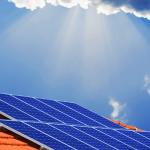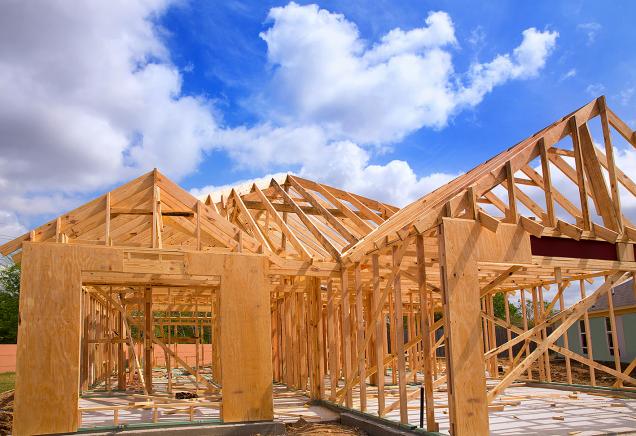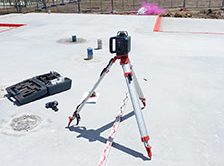
Current Solar Rebates in NSW
By HOUSPECT Building and Pest Inspections|October 15, 2019
You may not benefit as much by having solar panels on your home as you would have in the past. However, as a New South Wales homeowner, incentives still exist. Small-scale Technology Certificates (STCs) and feed-in tariffs (FiTs) are the two incentives that are currently available.
Small-scale Technology Certificates in NSW
Over the life of your generator, STC’s are calculated based on the proportion of expected energy output. Certificates are sold for approximately $40 and can provide a rebate that results in savings of thousands on the installation costs that you incur.
If you live in an area that receives a significant amount of sunlight, the good news is that you may benefit from STC’s. The number of STC’s you can take advantage of will also depend on the scale of your system. The STC distribution system is divided into four zones. Homeowners living in zone 1 will receive the lion’s share of STC’s, whereas those who live in zone 4 receive the least. For the most part, New South Wales is situated in zone 3 but if your home is in the North-West, you will benefit from zone 2 distribution.
Feed-in Tariffs
Feed-in tariffs are based on the amount of electricity produced versus the amount that is consumed by your home energy needs. If you are producing more electricity than you consume, the excess is fed back into the grid. In order to compensate you for the excess energy that your grids are producing, the electricity supplier provides a deduction on your energy bill. This is calculated on each kilowatt-hour (kWh) of electricity exported.
NSW Solar Plans
The New South Wales government provides the most up-to-date information on solar suppliers, allowing homeowners to find the cheapest deals. However, prices are subject to a number of factors that are dependent on your specific circumstances. For obvious reasons, the information on the website cannot account for prices for every homeowner.
New South Wales is still a great place to live if you are considering solar panels. The market is competitive and geared towards incentivising customers to switch to solar energy. It is always advisable to shop around so that you make the right investment. Available feed-in tariffs range from 6c/kWh to 20c/kWh or more. It is important to understand how a tariff will affect any potential discounts. You may receive smaller discounts from high feed-in tariffs so do your homework to ensure that you maximize the potential for solar panels working in your favour
Low-income Solar Scheme
If you are interested in solar panels but don’t have the financial resources to get started, you may qualify for the Low-income Solar Scheme. Taking part in the scheme provides the opportunity to forfeit the Low Income Household Rebate, equates to $285 a year, in exchange for a 2.5 kW solar system. The system you receive may not look like much but you may save around $600 on energy costs.
Solar Batteries in NSW
You may or may not have heard of solar batteries. This technology is growing in popularity with New South Wales homeowners. Solar batteries are able to capture and store all that excess energy that solar panels generate, reserving it for later use. The battery effectively prevents much of your excess energy being routed to the electricity grid. You have the potential to save on energy costs by saving excess energy in batteries, rather than taking advantage of relatively small savings through a feed-in tariff.
The downside is that solar batteries are far from cheap. You are looking at paying upwards of $8,000 for a single battery. If you already have a solar panel fitted, retrofitting is also an expensive project. It may take you between 10-15 years to recoup your costs on a battery.
When you are in the process of installing a solar energy system, always shop around and research all available options. There is huge potential for savings when you shop smart.
Small-scale Technology Certificates in NSW
Over the life of your generator, STC’s are calculated based on the proportion of expected energy output. Certificates are sold for approximately $40 and can provide a rebate that results in savings of thousands on the installation costs that you incur.
If you live in an area that receives a significant amount of sunlight, the good news is that you may benefit from STC’s. The number of STC’s you can take advantage of will also depend on the scale of your system. The STC distribution system is divided into four zones. Homeowners living in zone 1 will receive the lion’s share of STC’s, whereas those who live in zone 4 receive the least. For the most part, New South Wales is situated in zone 3 but if your home is in the North-West, you will benefit from zone 2 distribution.
Feed-in Tariffs
Feed-in tariffs are based on the amount of electricity produced versus the amount that is consumed by your home energy needs. If you are producing more electricity than you consume, the excess is fed back into the grid. In order to compensate you for the excess energy that your grids are producing, the electricity supplier provides a deduction on your energy bill. This is calculated on each kilowatt-hour (kWh) of electricity exported.
NSW Solar Plans
The New South Wales government provides the most up-to-date information on solar suppliers, allowing homeowners to find the cheapest deals. However, prices are subject to a number of factors that are dependent on your specific circumstances. For obvious reasons, the information on the website cannot account for prices for every homeowner.
New South Wales is still a great place to live if you are considering solar panels. The market is competitive and geared towards incentivising customers to switch to solar energy. It is always advisable to shop around so that you make the right investment. Available feed-in tariffs range from 6c/kWh to 20c/kWh or more. It is important to understand how a tariff will affect any potential discounts. You may receive smaller discounts from high feed-in tariffs so do your homework to ensure that you maximize the potential for solar panels working in your favour
Low-income Solar Scheme
If you are interested in solar panels but don’t have the financial resources to get started, you may qualify for the Low-income Solar Scheme. Taking part in the scheme provides the opportunity to forfeit the Low Income Household Rebate, equates to $285 a year, in exchange for a 2.5 kW solar system. The system you receive may not look like much but you may save around $600 on energy costs.
Solar Batteries in NSW
You may or may not have heard of solar batteries. This technology is growing in popularity with New South Wales homeowners. Solar batteries are able to capture and store all that excess energy that solar panels generate, reserving it for later use. The battery effectively prevents much of your excess energy being routed to the electricity grid. You have the potential to save on energy costs by saving excess energy in batteries, rather than taking advantage of relatively small savings through a feed-in tariff.
The downside is that solar batteries are far from cheap. You are looking at paying upwards of $8,000 for a single battery. If you already have a solar panel fitted, retrofitting is also an expensive project. It may take you between 10-15 years to recoup your costs on a battery.
When you are in the process of installing a solar energy system, always shop around and research all available options. There is huge potential for savings when you shop smart.



